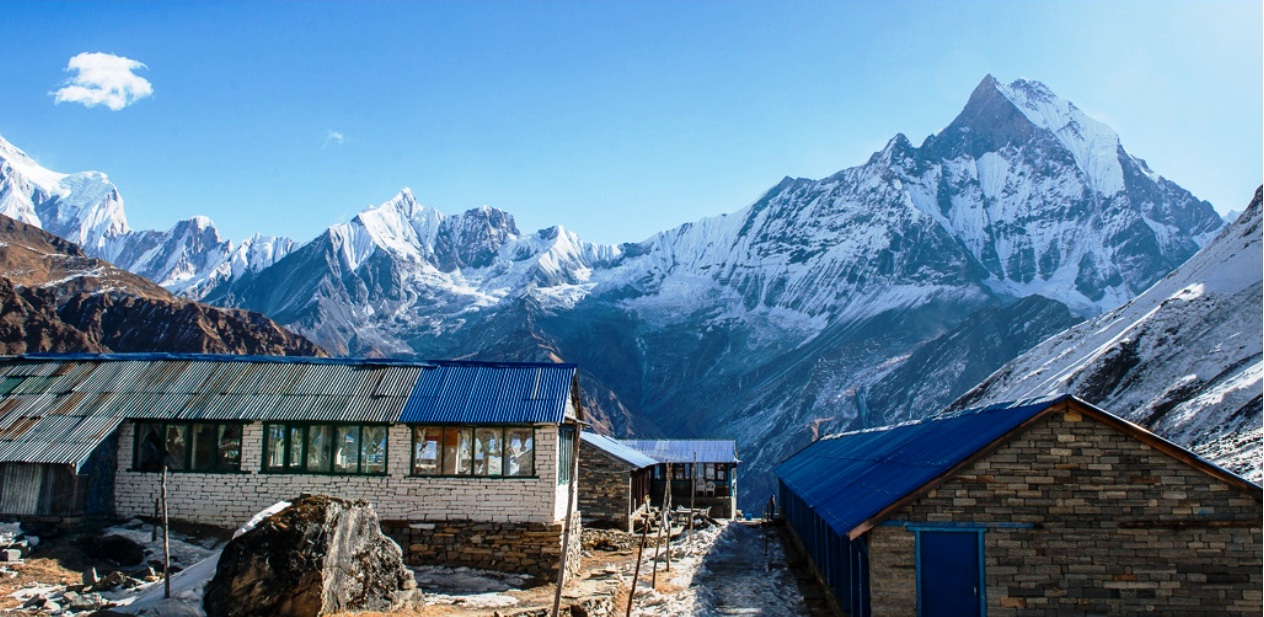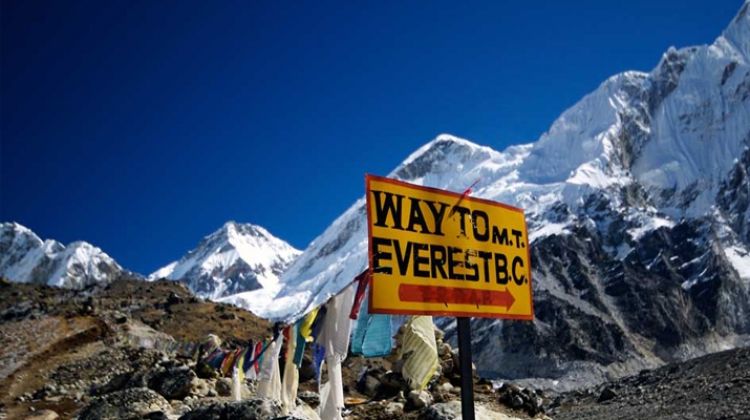8 Days Khopra Trek

Ranking among the best short treks, the Khopra Ridge Trek is one of the most beautiful treks in the country. Containing all of the elements of a classic trekking route like excursing to ethnic villages, encountering wildlife, panoramic views of the mountains and a beautiful landscape adorned with alpine forests and lush vegetation, the Khopra Ridge Trek is brimming with natural beauties. With an off-the-beaten-paths trekking trail in the Annapurna Region, the Khopra Ridge Trek presents remarkable views of Himalayan peaks like Dhaulagiri, Annapurna South and Nilgiri among various others. Traversing to the Kaire Lake is a major highlight of the Khopra Ridge trekking that allows you to have a closer look at the sapphire waters of the winsome lake like never before. Beguiling views of Mount Machhapuchhre and Mount Hiunchuli can also be seen from the village of Ghandruk. Draping down from the Annapurna South towards the world’s deepest gorge, Khopra Ridge Trek offers a stunning balcony to observe the Himalayas. The route to Khopra Ridge leaves the main hiking trail before Poon Hill, ascending instead to the ridge and a community trekking lodge poised atop it.
- Kathmandu to Pokhara by flight and drive to Kimche trek to Ghandruk ( 1.30hrs)
- Ghandruk to Tadapani O/nt ( 4 and half hrs)
- Trek to Dhan khara / Shittibung ( Lunch Place ) trek to Khopra ( total 6-7hrs)3660m View : Dhaulagiri 1 and 2, Tukche peak, Thapa peak, South Nilgiri, Baraha Sikhara, South Annapurna, 32mountatin ( battisputali )
- Trek to Khayer Lake ( 8-10hrs ) Hiking back to Khopra and O/nt
- Trek to Swanta o/nt
- Trek to Ghorepani
- Trek to Tikhedhunga / Hille
- Drive to Pokhara
Includes:-
- All airport pick up & drop and hotels transfer by private car / van (depends on group size)
- 3 nights hotel accommodation in Kathmandu at 3 star category inclusive bed and breakfast.
- 2 nights hotel accommodation in Pokhara inclusive bed and breakfast.
- Both way Kathmandu - Pokhara - Kathmandu surface transportation by tourist bus.
- Porter fees / accidental insurance / accommodation Trekking guide fees / accidental insurance / accommodation Twin sharing best lodges accommodation during the trek.
- All the necessary paper works and national park entry fees. (Trekking permit / TIMS card etc.)
- Rain protection duffel bag for client luggage Company guarantees helicopter rescue services in-case of emergency.
- One day Kathmandu sightseeing guided by city tour guide and transport.
- Provide trekking maps, Hiking pole and Sleeping bag. First aid medical kit box.
- All the government taxes and company service charge.
- At the end of the tour, Nepali food farewell dinner party in Kathmandu.
Excludes:-
International airfares and Nepal visa which obtained at the airport on arrival {bring 4 copies passport size picture too}
Alcoholic beverages, bottle mineral and hot/boiled water, soft drinks and snack foods
Meals during the trek in mountain regions. Your personal entrance fees for Kathmandu sightseeing.
Riding horse along the trek.
Tips to trip supporter.
Any other personal or non-personal expenses which are not mention in the includes cost.
Head:
Sun hat or scarf Light balaclava or warm fleece hat Sunglasses with UV protection
Lower Body:
Under Garments Hiking shorts Lightweight cotton long pants Light and expedition weight thermal bottoms Fleece or wool pants (seasonal) Waterproof (preferably breathable fabric) shell pants
Feet:
Thin, lightweight inner socks Thick, warm wool hiking socks Hiking boots with spare laces Camp shoes (sneakers and/or sandals) Gaiters for hiking in winter to the base camp
Upper Body:
T-shirts Light and expedition weight thermal tops Fleece jacket or pullover Fleece Wind-Stopper jacket (optional) Waterproof (preferably breathable fabric) shell jacket Down vest and/or jacket Hands: Lightweight gloves Heavyweight gloves or mittens with a waterproof shell outer (seasonal)
Accessories:
Sleeping bag rated to zero DC Headlamp (e.g. Petzl Zoom) with spare bulbs and batteries Trekking Bags/Duffel bag Basic First Aid Kit Large plastic bags - for keeping items dry insidetrekbag Daypack (approximately 2500 to 3000 cubic inches) Trekking Poles Water bottle (2) or camel bag Toiletries (Small wash towel, Toilet papers etc) Ear Plug (who know some people on group are snoring)
Toiletries:
1 medium sized quick drying towel Tooth brush/paste (preferably biodegradable) Multipurpose soap (preferably biodegradable) Deodorants Nail clippers Face and body moisturizer Feminine hygiene products Small mirror
Personal Hygiene:
Wet wipes (baby wipes) Tissue /toilet roll Anti bacterial hands wash
Extras/Luxuries:
Binoculars Novels Trail Map/Guide book Journal & Pen iPod Pencils and small notebooks Travel game i.e. chess, backgammon, scrabble Modest swim suits (for Kathmandu)
Is there any advice on Altitude Sickness?
Altitude mountain sickness can affect everyone while trekking including young and healthy people and is a genuine concern in the Khumbu region. If you feel dizzy, suffer palpitations or severe headaches, return immediately to a lower altitude. Do not take altitude sickness lightly. It can be fatal! When trekking, its vital to realize that you must always hike at a pace that is convenient to your body…& not to anyone else’s, make sure you feel comfortable when trekking and listen to your body…always. These are the questions we are often asked and we hope that you will find the answers useful. Please don’t hesitate to contact us if you have any further queries.
It is healthy to take shower during trek?
You can get hot shower services throughout the trip. However, the higher you climb the less pleasant it will be. It’s better to be on the safe side of things.
What do I have to carry with me on trek?
You will only have to carry a daypack, which should be a reasonable size to carry a water bottle, sunscreen, camera, etc. Your other packs are carried by porters. Again we stress on the wisdom of always ‘travel light’.
Does Tea house have electricity to charge devices?
Most of the tea houses have electricity facilities during the trekking period. You can charge your electronic devices on the trail.
How can I keep my luggage?
You can keep your luggage and valuable items in a locker at the hotel in Kathmandu for free of charge.
What is the weight limit of luggage?
The weight limit for the trek is 15 kg per guest, as it is the maximum weight that the porters can carry. It is also important to note that "hard" luggage poses a problem: soft "duffel-bags" are recommended which we provide. The lighter you are the better for the trails.
Where should I get my money exchange?
You can get your money exchanged at your hotel or we will recommend you the better place where you can get good exchanging rates. So once you are here in Kathmandu, visit us for further information.
Is it okay to get Nepal visa at airport or in advance?
Obtaining a Nepalese visa on arrival is easier except that you may have to spend some precious time queuing. If you get your visa in advance, you can avoid the queue. Also, don’t forget to bring cash as ATMs are not available at the airport. Note: If you are staying for more than 15 days, don’t forget to arrange a visa for 30 days.
How do I find you at the airport?
Our airport representative and a vehicle will be waiting you at the arrival gate of the airport; in his hand will be a plaque board holding your name clearly written on the board or paper. You can’t lose us.
Do you book lodges before or during the trek?
We accommodate trekking groups in local lodges available on the trail. As it is not possible to book the rooms days in advance, we send a porter few hours ahead of the group each day to book the rooms.
How can I enter into Nepal?
You can enter into Nepal both by land and flight. Several Airlines have direct flights to Kathmandu from London, Paris, Frankfurt, Doha, Osaka, Shanghai, Moscow, Bangkok, Singapore, Hongkong, Karachi, Bombay, Delhi, Calcutta, Paro, Dhaka, Lhasa and Varanasi.
What kind of Accommodation I can have during the trip?
In City like Kathmandu, Pokhara, Nagarkot we do provide star hotel as per your request and during the trekking, we will provide tea house accommodation. A Tea House is the combination of guest house, restaurant, and social hang out. Private rooms are available in most Tea Houses, except for high altitudes ones where it will be just dormitories. The lodges are fairly basic. The rooms are spare with twin beds and very little additional furniture. Blankets are generally provided. Most bathrooms are shared and toilets can be either squat type or the western version. Most of the Tea Houses have running water facility. Many of them have hot water available for bathing at additional cost. Solar heaters depend on day’s weather. But we discourage our groups from using water heated by wood, as lack of firewood in most villages is a big environmental concern in Nepal. It is advisable to carry wet wipes as an alternative
There is a large dining room-cum-lounge, warmed by stove (an iron cylinder, fitted with a chimney duct, in which a log fire is lighted). There is normally no electric lighting in the rooms unless the village has hydroelectric power. The dining room usually has solar lighting. Most tea houses now also have electricity for charging small appliances - mobile phones and cameras - and there may be a small charge for this.
During a Tea House trek you will usually have breakfast and dinner in the Tea House; lunch will be eaten at one of the trail side restaurants. Every Tea House serves the traditional Nepali meal Dal Bhat (rice and lentils), as well as a variety of different food items, such as rice, vegetables, noodles, potatoes and soup. Some have Nepali versions of western food such as pizza, pasta and French fries. Soft drinks, snacks and beer are available in most of the Tea Houses and trail side restaurants. And of course Nepali milk tea is served everywhere.
All tea houses have boiled water for trekkers. We discourage the purchase of bottled water while on the trail. The plastic bottles are difficult to dispose off and have become an environmental problem.
Trek Facts
Trek Name: 8 Days Khopra Trek
Trek Days: 10 Days
Total Price: 1500 USD
Trek Season: Janaury to August
Trek Package: Budget/Standard/Deluxe
Mode of Transfer: Bus/Car/Flight
Start/End of Trek: Kathmandu
Group Size: 5 - 8 Peoples
Trek Altitude: 2610m- 5550m
Trek Difficulty: Moderate
Accomodation Tea House / Breakfast
Culture Gurung / Thakali / Sherpa / Bahun



